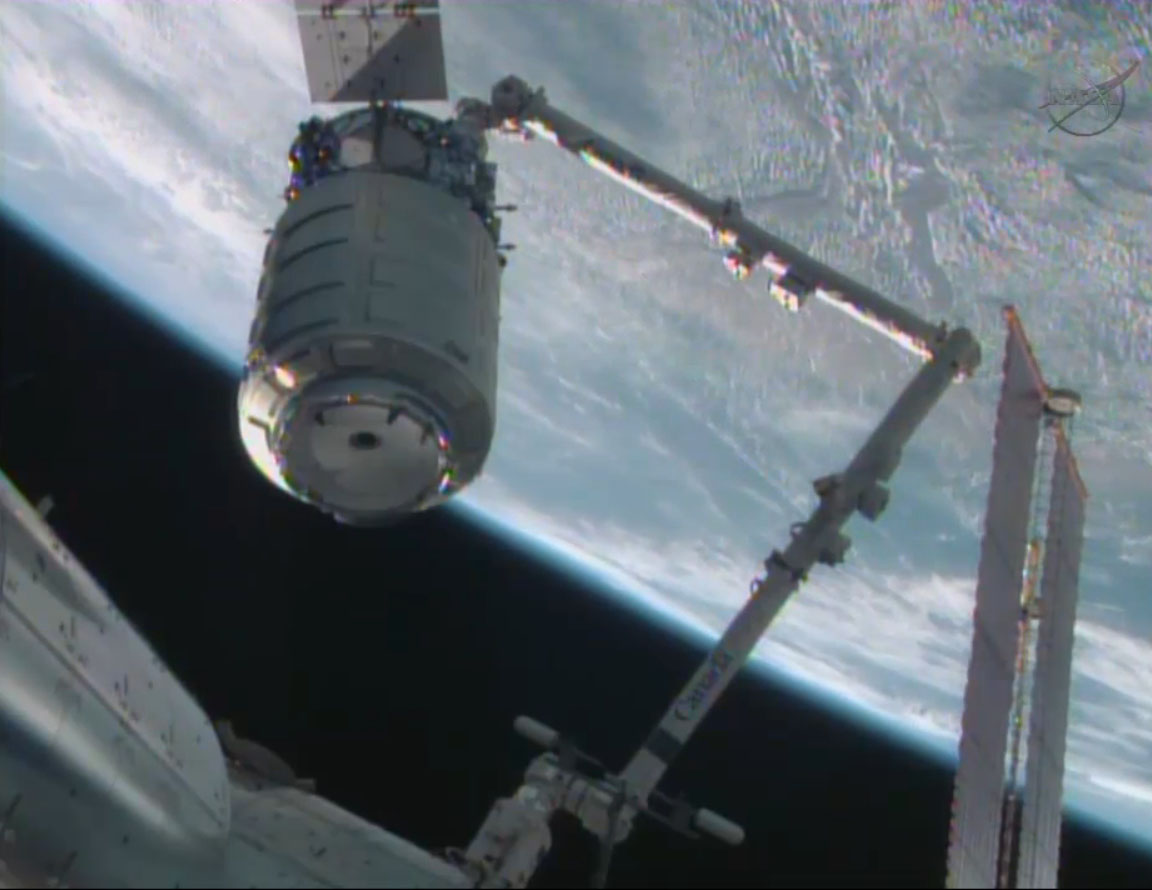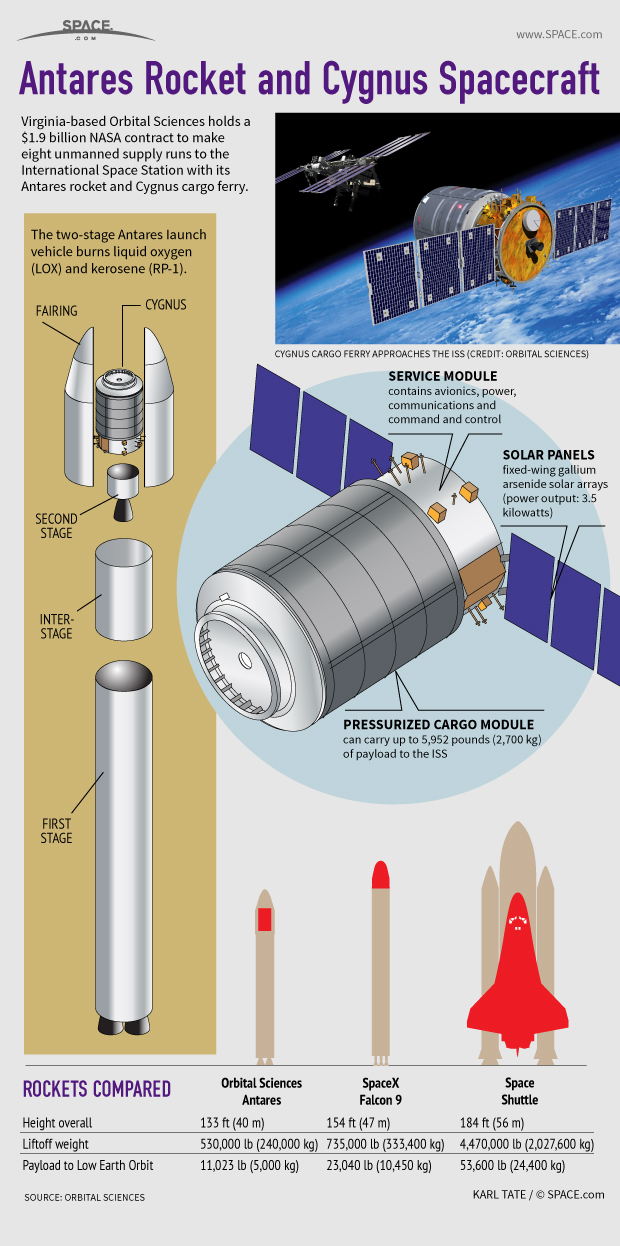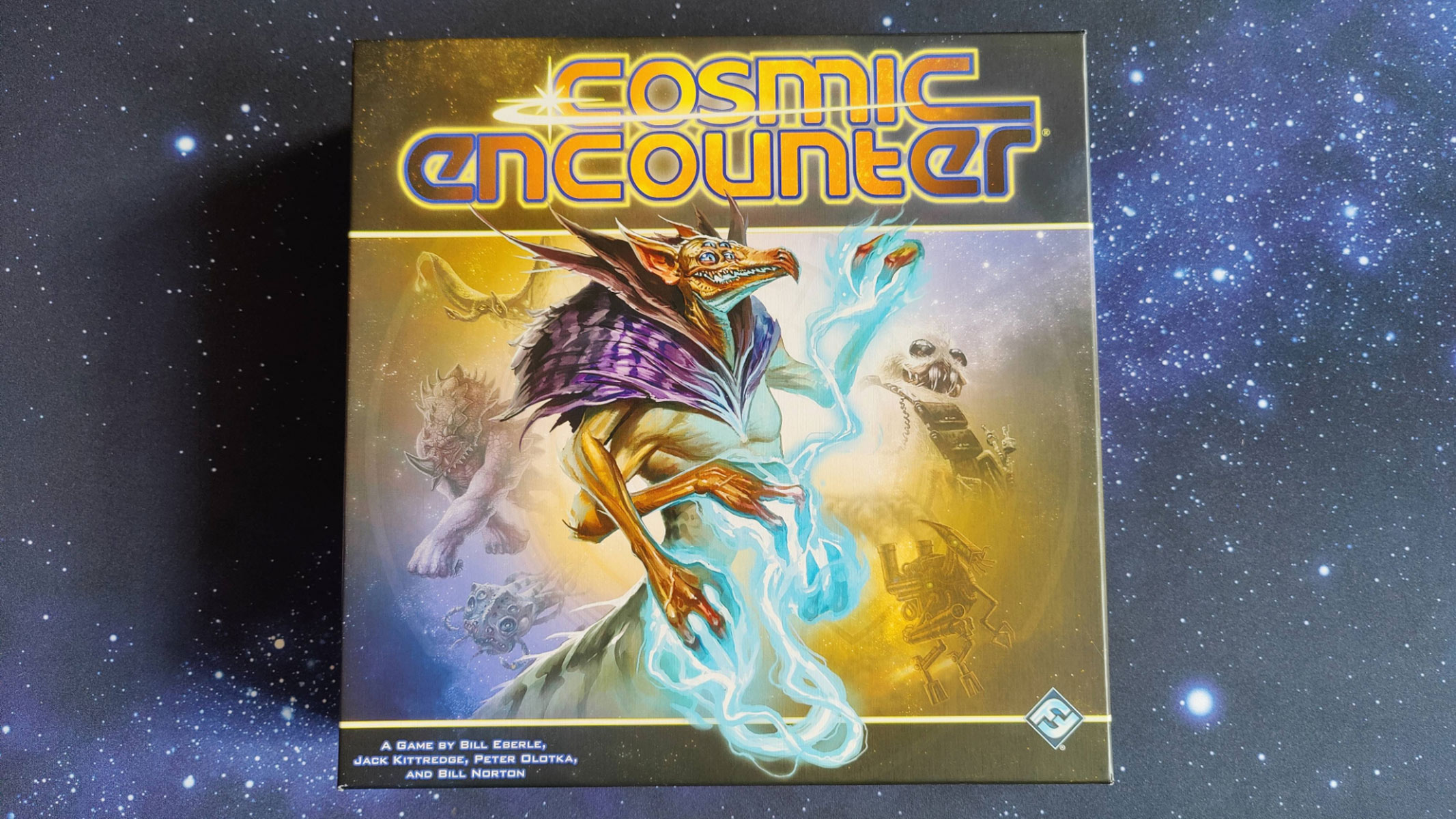Private Cygnus Spacecraft Makes Historic 1st Rendezvous with Space Station

A new commercial spacecraft built to haul cargo to the International Space Station for NASA made its debut delivery to the orbiting lab early Sunday (Sept. 29), capping a major test flight for its builder Orbital Sciences Corp., which described the space rendezvous as "epic."
The robotic Cygnus spacecraft was captured by space station astronauts using the outpost's robotic arm at 7 a.m. EDT (1100 GMT) as the two spacecraft sailed over the Indian Ocean. The orbital arrival, which occurred one week later than planned due to a software data glitch, appeared to go flawlessly.
"Houston, station, Cygnus capture complete," Italian astronaut Luca Parmitano radioed NASA's Mission Control in Houston as he latched onto the spacecraft with the station's robotic arm. By 8:44 a.m. EDT (1244 GM), the Cygnus was successfully attached to the space station. [See more photos from Orbital Sciences' 1st Cygnus test flight]
The Cygnus spacecraft launched to the space station on Sept. 18 in a smooth blastoff from NASA's Wallops Flight Facility in Virginia. It launched atop an Antares rocket, also built by the Dulles, Va.-based Orbital Sciences.
"It looks great," NASA astronaut Karen Nyberg as Cygnus hovered below the space station, with the bright blue Earth as a backdrop.
Orbital officials initially aimed for Cygnus to arrive at the space station on Sunday, Sept. 22, but a data format issue between the spacecraft and orbiting lab forced the company to abort that first rendezvous attempt. Troubleshooting efforts with that glitch and the impending arrival of a new space station crew aboard a Russian Soyuz spacecraft, which launched and docked on Wednesday (Sept. 25), pushed Cygnus' arrival to today.

Despite the delay, the Cygnus spacecraft appeared to perform flawlessly during today's arrival and capture at the space station. The rendezvous is a major test flight success for Orbital Sciences, which began work on the Cygnus and Antares space vehicles in 2008 and received $288 million from NASA to jumpstart the project.
Get the Space.com Newsletter
Breaking space news, the latest updates on rocket launches, skywatching events and more!
"A tremendous amount of hard work has gone into this five-year effort from our launch vehicle and spacecraft teams, and we are all exceptionally proud of their accomplishments," Orbital CEO David Thompson said in a statement.
Astronaut Cady Coleman in Mission Control radioed congratulatory messages to the space station crew from NASA chief Charles Bolden and Orbital Sciences officials after Cygnus' arrival. Those messages, she said, called today's Cygnus rendezvous a "superb" and "epic" event.

Sunday's test flight marked the last milestone for NASA's Commercial Orbital Transportation Services program, and sets the stage for Orbital's first official cargo delivery mission to the space station. Orbital has a $1.9 billion deal with NASA to provide eight cargo delivery flights using its Cygnus spacecraft and Antares rockets. The first of those deliveries could launch in December, company officials have said.
Orbital's Cygnus spacecraft is a silver pressurized cylinder 17 feet (5 meters) long built for the company by Italy's Thales Alenia Space. It is powered by an Orbital-built service module containing two solar wings for power, as well as rocket thrusters.
The spacecraft is designed to carry up to 4,409 pounds (2,000 kg), though this first test flight is packed with only 1,543 pounds (700 kilograms) of supplies and gear, Orbital officials have said. Cygnus spacecraft are designed to burn up in Earth's atmosphere at the end of their missions.
"Today, with the successful berthing of the Orbital Sciences Cygnus cargo module to the ISS, we have expanded America's capability for reliably transporting cargo to low-Earth orbit," NASA chief Charles Bolden said in a statement. "It is an historic milestone as this second commercial partner's demonstration mission reaches the ISS, and I congratulate Orbital Sciences and the NASA team that worked alongside them to make it happen."
With the retirement of NASA's space shuttle fleet in 2011, the space agency is depending on companies like Orbital Sciences to keep the International Space Station stocked with supplies. Orbital Sciences is one of two commercial spaceflight companies with billion-dollar contracts for cargo delivery.
The other firm is SpaceX of Hawthorne, Calif., which has a $1.9 billion contract for 12 supply missions using its Dragon space capsules and Falcon 9 rockets. SpaceX has flown two of those delivery missions already, and is expected to test fly an upgraded version of its Falcon 9 rocket later today in a launch from California. Unlike Cygnus, SpaceX's Dragon capsules are equipped with a heat shield and can return science experiments and gear to Earth from the station.
Orbital Sciences named the first Cygnus Spaceship G. David Low after a former NASA astronaut who oversaw Orbital's bids for NASA contracts, but died of cancer in 2008.
On Twitter, Orbital officials thanked the astronauts who captured Cygnus, and had a special note for Low: "... and to our great friend and colleague G. David Low...this one's for you," they wrote.
"We're very happy to have G. David Low onboard with us, and thanks to the whole team," Nyberg said.
The Cygnus spacecraft will stay linked to the space station for about 30 days, after which it will be detached and set free in mid-October to be intentionally destroyed in Earth's atmosphere. The disposable nature of Cygnus is similar to that the unmanned Russian, European and Japanese cargo ships that also service the International Space Station.
NASA and Orbital officials will hold a press conference today at 11:30 a.m. EDT (1530 GMT) to discuss today's successful Cygnus arrival at the space station. You can watch that press conference live on SPACE.com here, courtesy of NASA.
Astronauts on the space station are expected to open the hatches between the outpost and Cygnus early Monday (Sept. 30). That milestone will also be webcast live online, NASA officials said. SPACE.com is providing complete coverage of Orbital's first Cygnus test flight to the International Space Station.
Editor's Note: This story was updated at 10:37 a.m. EDT (1437 GMT) to include new comments from NASA and Orbital Sciences.
Email Tariq Malik at tmalik@space.com or follow him @tariqjmalikand Google+. Follow us @Spacedotcom, Facebook and Google+. Original article on SPACE.com.
Join our Space Forums to keep talking space on the latest missions, night sky and more! And if you have a news tip, correction or comment, let us know at: community@space.com.

Tariq is the Editor-in-Chief of Space.com and joined the team in 2001, first as an intern and staff writer, and later as an editor. He covers human spaceflight, exploration and space science, as well as skywatching and entertainment. He became Space.com's Managing Editor in 2009 and Editor-in-Chief in 2019. Before joining Space.com, Tariq was a staff reporter for The Los Angeles Times covering education and city beats in La Habra, Fullerton and Huntington Beach. In October 2022, Tariq received the Harry Kolcum Award for excellence in space reporting from the National Space Club Florida Committee. He is also an Eagle Scout (yes, he has the Space Exploration merit badge) and went to Space Camp four times as a kid and a fifth time as an adult. He has journalism degrees from the University of Southern California and New York University. You can find Tariq at Space.com and as the co-host to the This Week In Space podcast with space historian Rod Pyle on the TWiT network. To see his latest project, you can follow Tariq on Twitter @tariqjmalik.
